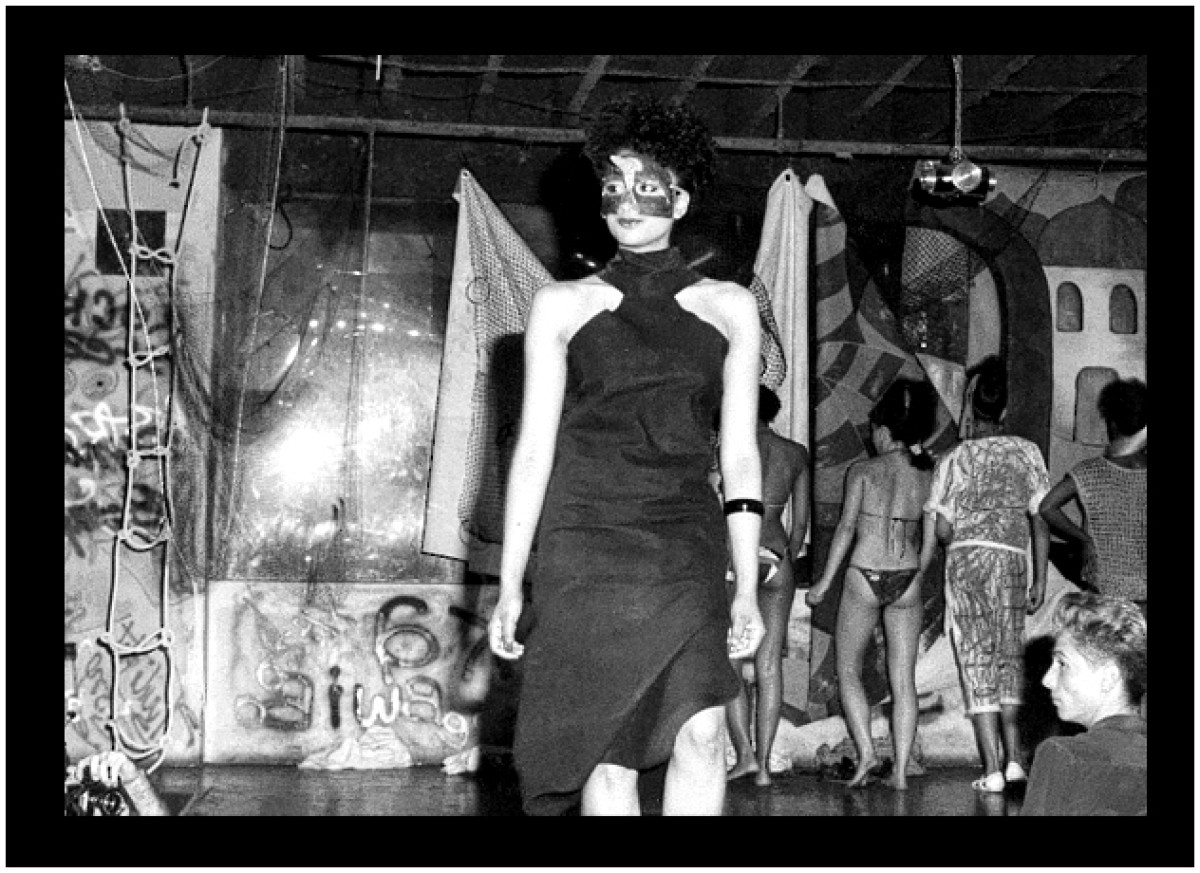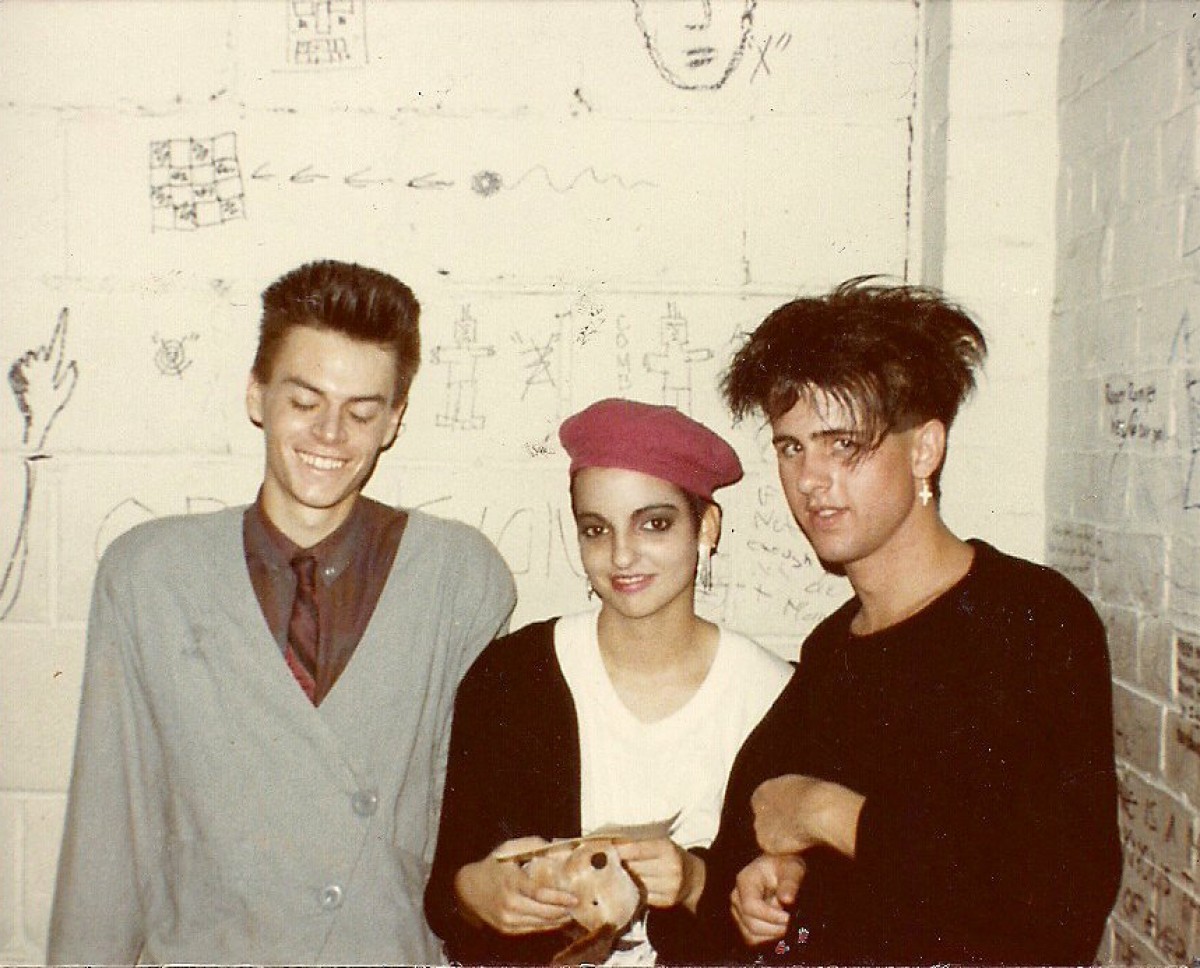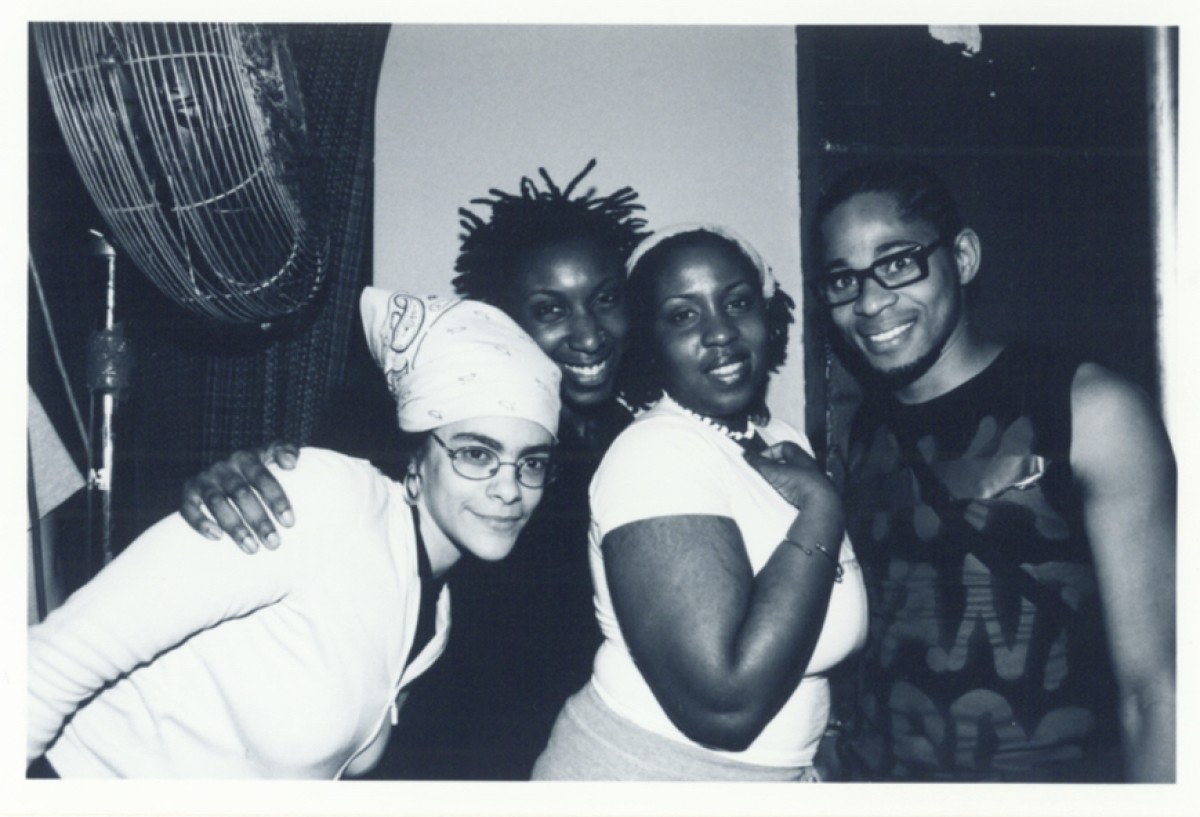Where the people dance
Before the AGO’s Nightclubbing: A Toronto History talk on March 25, DJ and journalist Denise Benson describes some of the people and places that moulded Toronto’s nightlife in an exclusive photo essay.

“The scene at Stages.” Photo by Terry Robson, courtesy of Arnie Kliger.
Denise Benson knows more than a thing or two about Toronto’s nightlife. An award-winning DJ and music journalist, she has been a fixture on the scene for the past 20 years. She’s the writer and researcher behind the web series Then & Now: Toronto Nightlife History (formerly published in The Grid) and author of the 2015 book, Then Y& Now: Toronto Nightlife History. On March 25, Benson will join in a (virtual) conversation with Twilight Zone club co-owner Albert Assoon, DJ Mark Oliver and writer and director Michele Geister for Nightclubbing: A Toronto History.
Together, they will discuss how music, art, fashion and design all had a part in creating Toronto's eclectic club scene in the 1980s and '90s. But, before what promises to be an engaging chat, in an exclusive image essay for AGOinsider, Benson narrowed down some of the people and places that helped shape Toronto’s nightlife from the late 1970s into the mid-2000s. Read on for a visual history lesson on some seminal venues in the city’s downtown core, like Twilight Zone, Stages, Domino Klub, Voodoo, Industry and Roxy Blu.
By Denise Benson, writer, DJ, researcher and author of Then & Now: Toronto Nightlife History.
TWILIGHT ZONE, 185 Richmond Street W. (1981 – 89)
Tony, Albert, David and Michael Assoon forever altered Toronto’s nightscape with their Twilight Zone, an unlicensed after-hours music mecca with the best sound in the city. The Zone brought together disco dons, house heads, new wavers, fashionistas and other late-night adventurers of all races, genders and orientations. Here, in a photo captured by the Assoons' friend Charmaine Gooden, the brothers and collaborator/friend Michael Griffiths walk along Richmond Street West – then still largely non-residential and known as the garment district – in search of a new space to open the club of their dreams. They found it at 185 Richmond West.
Twilight Zone was a hub for creative people and colliding influences. Where most other dance clubs tended to be known for a particular sound, the Zone embraced the electrifying collage that was the 1980s. Throughout the club’s history, artists, performers and the fashion-forward were a part of its core crowd. Everyone from then-rising NYC rappers Beastie Boys to T.O. Designers, including Dean and Dan of Dsquared2, graced the Zone’s makeshift stage. Fashion shows, like this one, were plentiful.
STAGES, 530 Yonge Street (1977 – 84) (image at top)
Before there was Twilight Zone, Torontonians still had plenty of trendy discotheques and a few good gay hotspots to dance at. Stages was in a class of its own. Opened at the stroke of midnight, January 1, 1977, on Yonge Street south of Wellesley Street, Stages raised the bar for late-night dancing in Toronto. Largely influenced by New York gay and after-hours clubs like The Saint and Studio 54, Stages ran Friday through Sunday and took the party to a higher level. Sound was amazing. Details mattered. The crowd was large, loyal and a mix of gay men, lesbians and straight folks attracted to the music and vibe. It was decadent, fun and beautifully lit.
DOMINO KLUB, 1 Isabella Street (1979 – 1984)
In the late 1970s through much of the '80s, Yonge and Isabella was an epicentre for emergent music, arts and fashion culture. The area came alive at night. From '79 to '81, street-savvy event producer Michael Gallow and pioneering DJ Dave Allen brought punks, new wavers, fashionistas and artists of all stripes and sexualities together in the upper level of 1 Isabella. Their Domino Klub – Toronto’s original post-punk and new-wave dance club – quickly gained a reputation as a sympathetic spot for new British music and edgy fashion. Members of visiting bands like Japan, U2 and Simple Minds hung out. Platinum Blonde was essentially the house band. “Advanced fashion” label Parachute staged shows. Many regulars were hair stylists at the nearby House of Lords and Rainbow Room. Their collective creativity was captured beautifully in the many photos taken by artist and Domino Klub regular, Alice Andersen.
VOODOO, 9 St. Joseph Street (1981 – 85)
In Domino Klub, Michael Gallow, Dave Allen and friends had created a space where expression and originality were paramount. Unfortunately, they didn’t own the venue and were paid little by the man who did. So, down the street and around the corner to St. Joseph Street they went. Gallow opened the unlicensed, after-hours weekend dance club Voodoo – above gay bar Katrina’s – in August 1981. As with Domino, Voodoo attracted people of varying genders, sexualities and subcultures. Dave Allen’s range of edgy sounds continued to connect crowds. The club’s decor was low budget, with most areas painted fully black, a minimalist lighting system and a white hallway covered in black marker. No matter. The creative people who partied there added colour to a club where the main door policy was “No blue jeans.”
INDUSTRY, 901 King Street W. (1996 – 2000)
Promoters Gavin “Gerbz” Bryan, Daniel Bellavance and DJs Matt C and Mario J came together to open a high-quality, thousand-person venue devoted to underground dance music in 1996. Industry quickly came to embody the maturation of Toronto’s late-night, underground dance-music movement. It operated during some of the most explosive years for raves in this city and proved to be an ideal home for a diverse crowd of experienced clubbers who knew their music. Industry presented an impressive range of artists – including Daft Punk, Basement Jaxx, Paul Oakenfold, Roni Size and Fatboy Slim – in their Canadian club (i.e. non-rave) debuts. Above all, Industry helped establish this city’s reputation abroad while also convincing Toronto to take itself – and its talent – seriously. Now internationally-renowned, DJ/producer Kenny Glasgow (pictured above) was a beloved Industry resident for its entirety.
ROXY BLU, 12 Brant Street (1998 – 2005)
Roxy Blu was home to the soulful side of Toronto’s dance music underground. With its four rooms, welcoming atmosphere, and loyal community of followers, Roxy fostered and supported a culture where parties and promoters could create without compromise. Opened by Amar Singh in a 10,000-square-foot warehouse at 12 Brant Street – then a completely off-the-beaten-path location – Roxy had low ceilings, wooden floors and great sound. Its eclectic mishmash of furniture and decor was ideal for the music-loving, sweaty dancers that frequented it. Promoters including Hot Stepper, milk and the Movement DJ collective threw parties devoted to house, disco, soul, leftfield dancefloor jazz and the like. The women behind College Street café and bar 52 inc. – Kate Cassidy and Amy Katz – also presented many unique events at Roxy, including a sold-out performance by NYC spoken word artist Ursula Rucker in March 2000. In the great photo above, she’s joined by local wordsmiths Karen Augustine, Jemeni and Shafiq, who also performed.
Want to learn more about Toronto’s history on the dancefloor from some of the city’s most well-known movers and groovers? Register in advance for Nightclubbing: A Toronto History here and tune in virtually on March 25 at 7:30 pm.






